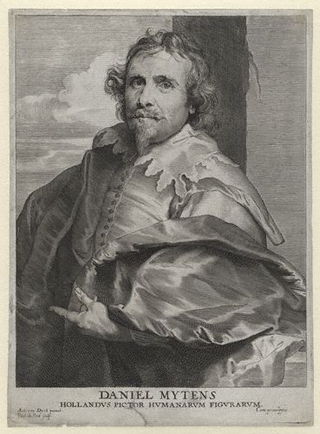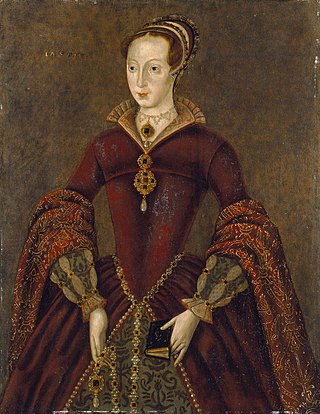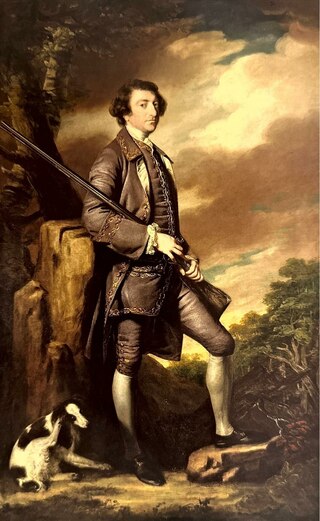Related Research Articles

Sir Anthony van Dyck was a Flemish Baroque artist who became the leading court painter in England after success in the Spanish Netherlands and Italy.

The Fitzwilliam Museum is the art and antiquities museum of the University of Cambridge. It is located on Trumpington Street opposite Fitzwilliam Street in central Cambridge. It was founded in 1816 under the will of Richard FitzWilliam, 7th Viscount FitzWilliam (1745–1816), and comprises one of the best collections of antiquities and modern art in western Europe. With over half a million objects and artworks in its collections, the displays in the museum explore world history and art from antiquity to the present. The treasures of the museum include artworks by Monet, Picasso, Rubens, Vincent van Gogh, Rembrandt, Cézanne, Van Dyck, and Canaletto, as well as a winged bas-relief from Nimrud. Admission to the public is always free.

Dulwich Picture Gallery is an art gallery in Dulwich, south London. It opened to the public in 1817 and was designed by the Regency architect Sir John Soane. His design was recognized for its innovative and influential method of illumination for viewing the art. It is the oldest public art gallery in England and was made an independent charitable trust in 1994. Until then, the gallery was part of the College of God's Gift, a charitable foundation established by the actor, entrepreneur and philanthropist Edward Alleyn in the early 17th century. The acquisition of artworks by its founders and bequests from its many patrons resulted in Dulwich Picture Gallery housing one of the country's finest collections of Old Masters, especially rich in French, Italian and Spanish Baroque paintings, and in British portraits from the Tudor era to the 19th century.

The Yale Center for British Art at Yale University in central New Haven, Connecticut, houses the largest and most comprehensive collection of British art outside the United Kingdom. The collection of paintings, sculpture, drawings, prints, rare books, and manuscripts reflects the development of British art and culture from the Elizabethan period onward.

Daniël Mijtens, known in England as Daniel Mytens the Elder, was a Dutch Golden Age portrait painter belonging to a family of Flemish painters who spent the central years of his career working in England.
Sir Oliver Nicholas Millar was a British art historian. He was an expert on 17th-century British painting, and a leading authority on Anthony van Dyck in particular. He served in the Royal Household for 41 years from 1947, becoming Surveyor of The Queen's Pictures in 1972. He was the first Director of the Royal Collection from 1987. He served in both offices until his retirement in 1988.

The Soviet sale of Hermitage paintings in 1930 and 1931 resulted in the departure of some of the most valuable paintings from the collection of the State Hermitage Museum in Leningrad to Western museums. Several of the paintings had been in the Hermitage Collection since its creation by Empress Catherine the Great. About 250 paintings were sold, including masterpieces by Jan van Eyck, Titian, Rembrandt, Rubens, Raphael, and other important artists. Andrew Mellon donated the twenty-one paintings he purchased from the Hermitage to the United States government in 1937, which became the nucleus of the National Gallery of Art in Washington, D.C.

Philip Jonathan Clifford Mould is an English art dealer, London gallery owner, art historian, writer and broadcaster. He has made a number of major art discoveries, including works of Thomas Gainsborough, Anthony Van Dyck and Thomas Lawrence.

Fake or Fortune? is a BBC One documentary television series which examines the provenance and attribution of notable artworks. Since the first series aired in 2011, Fake or Fortune? has drawn audiences of up to 5 million viewers in the UK, the highest for an arts show in that country.

Portrait of Queen Henrietta Maria, as St Catherine is a painting by Sir Anthony van Dyck.

Charles Fairfax Murray was a British painter, dealer, collector, benefactor, and art historian who was connected with the second wave of the Pre-Raphaelites.

The Gurlitt Collection was a collection of around 1,500 art works inherited by Cornelius Gurlitt, the son of one of Hitler's official art dealers, Hildebrand Gurlitt (1895–1956), and which was found to have contained several artworks looted from Jews by the Nazis.

Magistrate of Brussels is an unfinished oil painting or oil sketch by Anthony van Dyck, rediscovered in 2013 after being shown on episodes of the BBC television programme Antiques Roadshow.

Bendor Gerard Robert Grosvenor is a British art historian, writer and former art dealer. He is known for discovering a number of important lost artworks by Old Master artists, including Sir Peter Paul Rubens, Claude Lorrain and Peter Brueghel the Younger. As a dealer he specialised in Old Masters, with a particular interest in Anthony van Dyck.

The "Streatham" portrait is an oil painting on panel from the 1590s believed to be a later copy of an earlier portrait of the English noblewoman Lady Jane Grey. It shows a three-quarter-length depiction of a young woman in Tudor-period dress holding a prayer book, with the faded inscription "Lady Jayne" or "Lady Iayne" in the upper-left corner. It is in poor condition and damaged, as if it has been attacked. As of January 2015 the portrait is in Room 3 of the National Portrait Gallery in London.

Remigius van Leemput, known in England simply as Remee, was a Flemish portrait painter, copyist, collector and art dealer mainly active in England. Together with another Flemish master painter from Antwerp, George Geldorp, he was the key collaborator of Anthony van Dyck during van Dyck's final stay in London.
Adolphe Schloss was a German-French art collector and an important broker of export goods, or commissionaire, with his firm Adolphe Schloss Fils et Co., particularly important in the trade of Parisian haute couture.

Self-Portrait with a Sunflower is a self-portrait by Anthony van Dyck, a Flemish Baroque artist from Antwerp, then in the Spanish Netherlands. The oil on canvas painting is generally between 1632 and 1633. His successful ventures in the Spanish Netherlands and Italy propelled van Dyck into a career as court painter. Van Dyck was serving as "principal Paynter in order to their Majesties" at the court of Charles I of England when he created this self-portrait. The symbolism behind the sunflower and gold chain have been a point of contention amongst various art historians. Van Dyck's dedication to capturing the likeness of his models was the basis for his strong influence over the art of portraiture long after his death in 1641. His portrait technique evolved into what is referred to as his Late English period as seen in Self-Portrait with a Sunflower. This work is now in the private collection of the Duke of Westminster, housed at Eaton Hall in Cheshire.

Simon Rollo Gillespie is a British conservator-restorer of fine art, and an art historian. He is known particularly for his work with Early British and Tudor portraits, although his practice extends across all periods from early paintings to contemporary artworks. Gillespie has been restoring art since 1978, and he appears frequently on the BBC Four series Britain's Lost Masterpieces, having previously appeared on the BBC1 art programme Fake or Fortune.

Philip Eyre Gell (1723–1795) of Hopton Hall near Wirksworth, Derbyshire, was a wealthy lead-mining aristocrat.
References
- ↑ Millward, David. "Rare Gainsborough uncovered by Antiques Roadshow presenter". Telegraph.co.uk. Retrieved 2017-02-14.
- ↑ Mould, Philip (1997-03-13). The Trail of Lot 163: In Search of Lost Art Treasures. London: Fourth Estate. ISBN 9781857025231.
- 1 2 Alberge, Dalya (2011-06-11). "Van Dyck paintings unearthed by saleroom sleuth". The Guardian. ISSN 0261-3077 . Retrieved 2017-02-14.
- ↑ "Fake or Fortune presenter finds rare portrait by Mary, Queen of Scots court artist worth hundreds of thousands". The Daily Telegraph . Archived from the original on 2021-03-30.